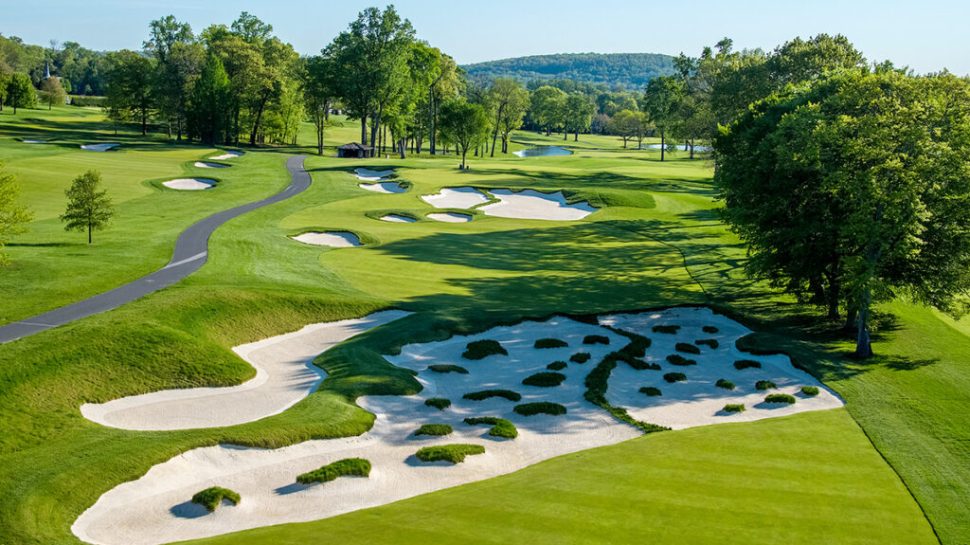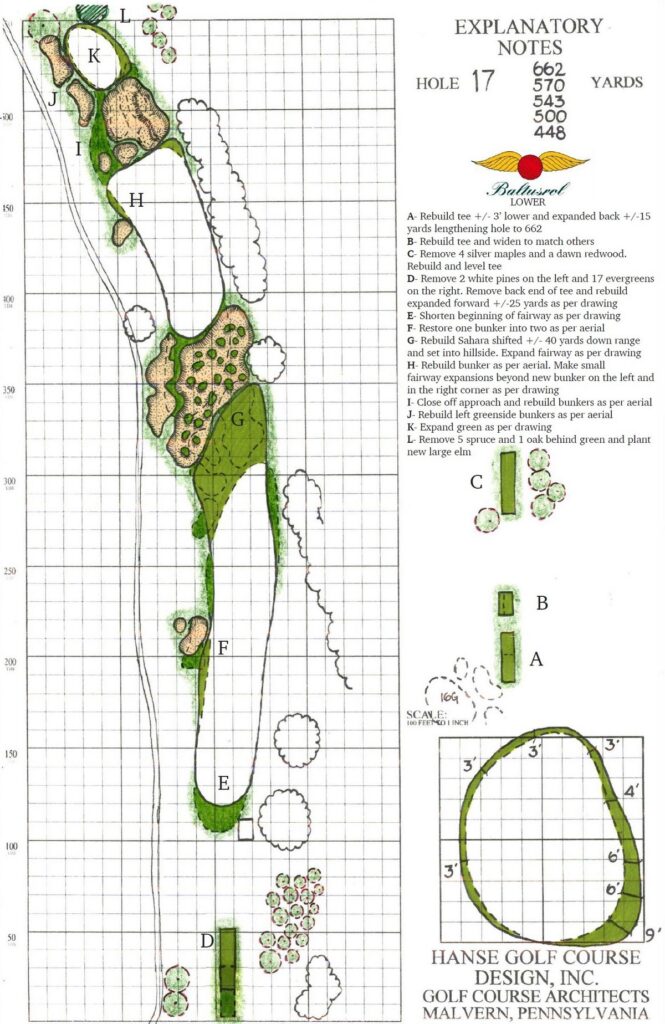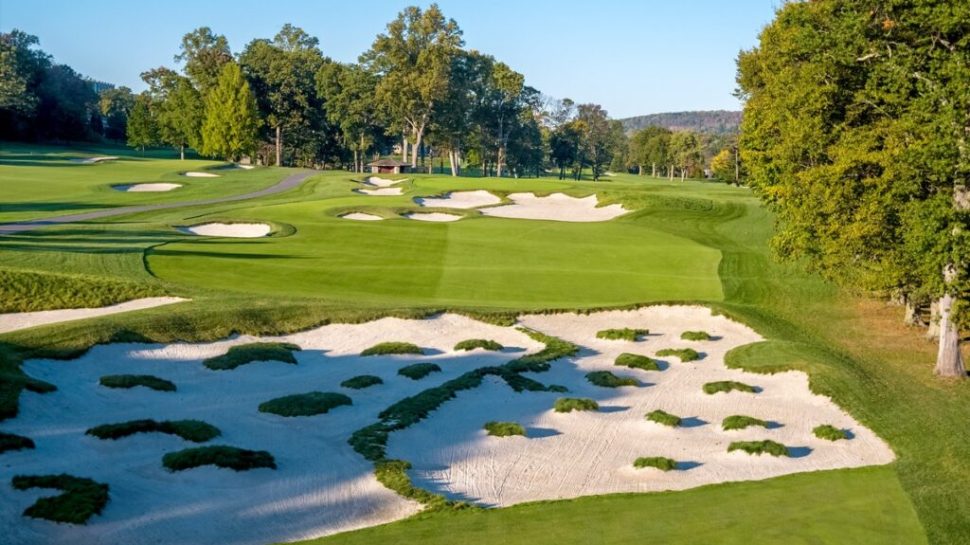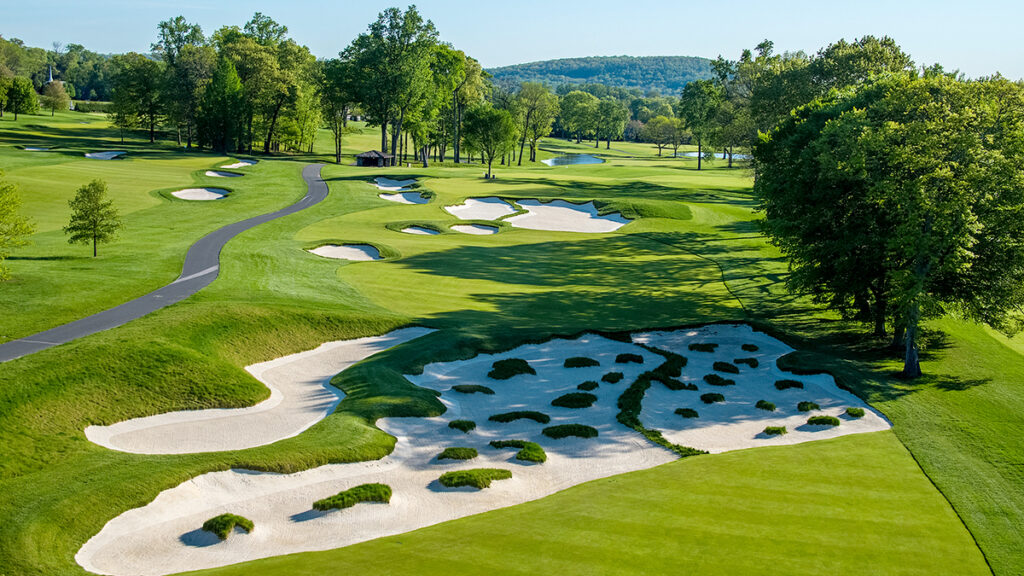Lower Course
Springfield, NJ, USA
17th Hole / 655 Yards / Par-5
Architect: A.W. Tillinghast (1922)
Most recent updating by Gil Hanse (2021)

Estimated reading time: 4 minutes
Among the most noted golf clubs that have hosted national championships in the USA since golf blossomed as a sport in America is Baltusrol Golf Club. The storied New Jersey-based club has hosted 18 various national championships — including 7 U.S. Opens and 2 PGA Championships. The club will also stage the 2023 KPMG Women’s PGA Championship and its third PGA Championship in 2029.
Baltusrol, which sits at the base of Baltusrol Mountain, opened in 1895 through the efforts of its founder Louis Keller. In 1922 the renowned architect A. W. Tillinghast was hired to provide two separate 18-hole layouts — called the Lower and the Upper respectively. Subsequent improvements took place from Robert Trent Jones, Sr. and his son Rees. In 2021, the club unveiled a restoration effort for the Lower Course from architect Gil Hanse meant to recapture the original vision Tillinghast envisioned.
The Lower is unique among championship courses because its famed two closing holes are consecutive par-5 holes. The penultimate hole plays 655 yards and for all but the strongest of players is a true three-shot hole.

The rigors of the hole commence with the tee shot. Given the length faced it is imperative for players to marry both sufficient length and needed accuracy to secure a fairway landing. Hanse also removed ill-placed trees on the left side of the teeing area that narrowed the opening when the hole is played in the rearmost tee position.
The hole turns slightly left in the drive zone and after the tee shot players encounter a massive “Sahara bunker” complex. The bunker complex has been shifted 40-yards further down the fairway and therefore creates a meaningful obstacle. Players failing to find the fairway will have to decide whether a second shot over or before the Sahara is the wisest course of action. Those staying short will find an approach shot to the green ranging from 180 to 208 yards. The third shot from this position is a daunting one. The effective carry yardage to the green is slightly more — roughly 5-6 yards — given the elevated position of the putting surface.
Interestingly, the sand within the Sahara is only raked once per week and because of that a wide range of outcomes can occur on how a golf ball lies when located there.
Once the Sahara is cleared there is a sufficient landing area to plan one’s approach shot. As mentioned, the putting surface is above the player and requires a keen sense of club selection to a well-defended target. The green also provides a number of internal riddles that can quickly bedevil those not able to discern the various movements. The 17th was expanded to 8,050 square feet, and, on average, greens on the Lower Course were expanded by 22%.

Prior to the 1993 U.S. Open no player in competition had ever reached the green in two shots. Playing 630 yards for the event — John Daly became the first golfer to do so using a driver and 1-iron that bounced just short of the green and then hopped onto the surface and remained there. Slightly downwind conditions aided Daly but nonetheless, the feat was extraordinary. Inexplicably, Daly would then go on to three-putt the hole. What many do not remember is that Scotsman Sandy Lyle, who preceded Daly, also was flagstick high but his ball finished just off the green.
It was at that same event where Jack Nicklaus sealed his fourth U.S. Open title with a dramatic 22-foot putt on the 17th during the final round to solidify his lead over Japan’s Isao Aoki in an epic event.
The 17th of the Lower at Baltusrol requires a high consistency of execution and utter resolve. While many golfers believe par-5s are ripe for easy birdie opportunities the hole will not yield to anything but the highest level of play. The Hanse effort has clearly rejuvenated the central character of what Tillinghast originally provided.
***
Photos courtesy: Evan Schiller
Rendering courtesy: Hanse Golf Course Design
